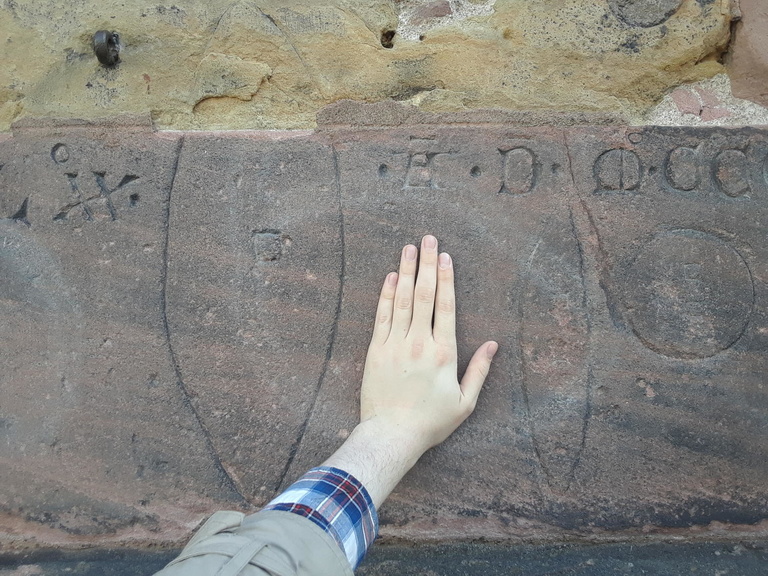
To me, American history feels more compartmentalized than history in Europe. I tended to approach American history as something I would have to travel at least a day or more to find. Meanwhile, in Freiburg, I can see nine hundred years of history a few inches apart.
Near the entrance of the Münster, a massive cathedral and Freiburg’s most famous landmark, there are three markings in the stone. The first one can find evidence of nine hundred years’ worth of history a few inches apart. There is a large oval, nine hundred years old, placed during the start of construction on the cathedral and intended to signify how big a loaf of bread should be. Next to it is a second oval, much smaller. This oval was added five hundred years later during the Thirty Years War. The destruction, famine, and loss of life that resulted was so great that this was the biggest anyone could reasonably be expected to make a loaf of bread. Directly above these two ovals is a place where the stone has been damaged and replaced; this was a result of the bombing of Freiburg in 1944.
I can find this history without looking for it. On my walk to class each morning I leave student housing, constructed initially as barracks in the 1930s. Next, I go by the medieval Bächle, originally built to fight fires. Less than a block away from the student center I see two stumbling stones, placed in the memory of two Jewish sisters who lived on the street and were murdered in the Holocaust. Finally, I arrive at the IES Student Center, housed in a nineteenth-century villa built by the new money which came to Freiburg following German unification in 1871.
Going to a city only amplifies this. In Berlin, I witnessed Soviet graffiti in the Reichstag, a shrine to Aleksandra Dulkiewicz along the remains of the Berlin Wall, and monuments to Marx across from a shopping mall. I spoke to a resident of East Germany who told of the role nudism, among other things, played as an act of resistance. I watched a Weimar silent film at the Weimar theater. And this was just in one day! And yet, when I talk to locals, most people don’t pay much attention to any of this history. Which shouldn’t surprise me; after all, I do the exact same thing. In Iowa City alone, on the walk from one class to the next I’ve gone through the site of protests over the invasion of Cambodia, riots over prohibition, and seen the art of a student who would be exiled from the United States. And that’s before getting into history in the city that can’t be easily linked with one person or place; the story of immigration to Iowa, for example, is just as intricate as the history of democracy in Poland.
I love being here, being able to find a rich history wherever I look, and you know what? Once I'm back home I look forward to being able to find an equally rich history in Iowa.

A native of Rolfe, Iowa, Lee Sailor is a political science major and pursing a minor in history at the University of Iowa. Lee is spending the semester in Germany on the IEW Freiburg European Union program.